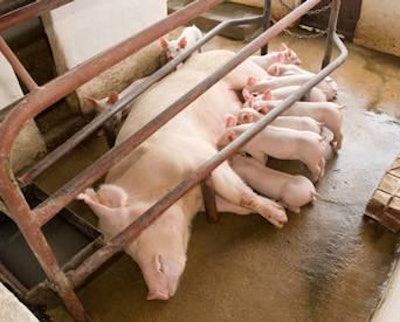
Trace minerals control many metabolic pathways for energy efficiency, health and immunity in pigs, but trace mineral requirement estimates have not changed very much in the last 50 years, according to Dr. Merlin Lindemann, professor, animal science, University of Kentucky. In the same time frame, all measures of swine productivity have increased, e.g., litter size, growth rate and feed efficiency, but feed intake has actually decreased. Lindemann told the audience at the WATTAgnet.com webinar, "The real value of trace minerals in driving performance," sponsored by Novus International, that since feed conversions have improved, the concentration of trace minerals in the diet may need to be increased to offset the trace minerals that would have been obtained in the pounds of feed that are no longer being consumed.
In addition to increasing trace mineral concentration in the diet, the supply of trace minerals that are actually available for the pig to utilize is affected by the relative bioavailability of the source, mineral interactions and the presence of dietary anti-nutrients. Organic sources of trace minerals can be more bioavailable than inorganic sources, and not all organic sources of trace minerals have the same bioavailability.
Lindemann said that the impact of additional trace mineral supplementation of swine diets can be demonstrated most easily in rapidly growing pigs or in pregnant and/or nursing sows. He presented research results that showed that the number of piglets that survive to weaning can be increased in sows by increasing trace mineral supplementation in the diet. This effect is most evident when comparing sows that have had multiple litters. He suggested that concentration of trace minerals should be increased in diets for older sows.
If the trace mineral content of a sow’s diet is not optimized, Lindemann said that the amount of demineralization of the sow will increase with each successive litter. Optimizing the trace mineral content of the sow’s diet can prevent this demineralization and can result in as much as one additional piglet surviving to weaning in later litters. Better sow mineralization can also result in higher piglet birth weights, which are strongly correlated with the growth rate of the pig up to market age.

















